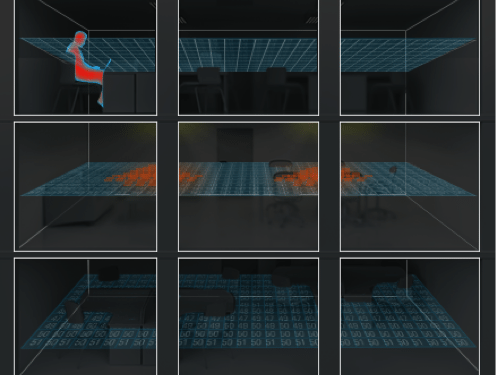People have always sought to make sense of the environment and utilize resources to enhance their safety, comfort, and wellbeing. It is no different in the growing world of IoT and the evolution of how brick-and-mortar buildings are moving from solely providing shelter to having increasingly complex ?intelligent? systems, which allow them to evaluate their own surroundings for the ultimate comfort and safety of their inhabitants.
We are all familiar with current systems installed in many buildings- automated doors, thermostats, smoke detectors, security motion sensors, and the like. These conveniences make our surroundings more comfortable, but that is where their usefulness ends. Increasingly sophisticated systems will enable buildings to ?think? for themselves by inferring outcomes and insights from the collected data of these technologies and not only predict, but diagnose issues.
The fact is that we live in physical spaces that have a great impact on our safety, productivity, effectiveness and security. Sensors of a variety of types serve to augment human perception and bring to light forces and phenomena that we would otherwise remain unaware of. The availability of inexpensive sensors means that many types of measurements can now be made over large areas, while maintaining precision from multiple readings. These sensors enable us to measure all sorts of ?fields? in areas where we live, work and play. And knowing more about the environment in this way?gleaning information on fields and how they interact with each other, looking at phenomena or measurements that pertain to our safety, or to the efficient functioning of our environmental systems, for example, can provide us with useful insights to drive action.
The sensors are all sources to tap in order to generate deep and meaningful insights about what is going on inside a facility from maintenance, power management, security, and utilization perspectives. All of this data can be fused together to furnish significant insights. Depending on the purpose and security profile of the?building, advanced big data analysis and Machine Learning/Artificial Intelligence techniques can be used to create an invisible digital shield around zones in the?building or the facility as a whole.
At Austin-based AI company SparkCognition, we have pioneered Automated Model Building algorithms and have applied these capabilities with great success to several large-scale plant and equipment use cases. For example, FlowServe Corporation, one of the largest manufacturers of pumps, valves and other types of oil & gas facilities equipment, uses these algorithms to extend the failure forewarning window on their products from 2-3 hours using conventional data science techniques, to up to 5 days. But most interestingly, as the equipment encounters real world loads and differences in maintenance and usage patterns, the algorithms self-adapt and optimize their predictions to the specific pump or valve they are monitoring. They don?t need to apply a single hand-built machine learning model to all instances of the same pump, even though the equipment has ?drifted? significantly over time and is no longer as alike as it was when it first rolled off the factory floor.
Building?design is poised at a fascinating juncture where, for the first time, structures will not only serve as passive dwellings, but will become proactive participants in enabling security, comfort and productivity for their inhabitants. The means to achieve this leap in capability will be the combination?of?1) advanced sensors and?IoT?technology, which will allow the?building?to gauge its environment, learn about its users and monitor itself, 2) artificial intelligence based cognitive capabilities that will form the core?of?a smart?building’s ‘mind’, enabling pattern identification, anomaly detection, state recognition, continuous learning, speech and language understanding, planning and more, and 3) actuation systems that will allow decisions informed by sensors and made by AI algorithms to actually be acted upon and implemented in a physical sense.
While?it?is possible to retrofit older structures with this type?of?capability, as with all significant refits, costs will be high and the entire spectrum?of?capability will not be available as ‘upgrades’. Therefore,?it?is the right time for architects, engineers, owners and planners to start thinking about how they can create smart spaces from the ground up. Future?buildings?will be as much about AI,?IoT,?and advanced automation as they will be about steel, concrete and glass. And perhaps their most distinguishing characteristics will emerge from their intellect, and not just their looks!
Editor?s Note: Welcome to our weekly Reader Forum section. In an attempt to broaden our interaction with our readers we have created this forum for those with something meaningful to say to the wireless industry. We want to keep this as open as possible, but we maintain some editorial control to keep it free of commercials or attacks. Please send along submissions for this section to our editors at: skinney@rcrwireless.com.
Guest Contributor:?Amir Husain, Founder & CEO, SparkCognition
CEO Amir Husain founded SparkCognition with the desire to build a company that would be at the forefront of?the ?AI 3.0? revolution. An undisputed?tech?leader in Austin and in the industry at large, Amir built?multiple venture-funded startups between 1999 and 2009, at which point he took over as President and CEO of VDIworks. For his inventions, Amir has been awarded 14 US patents and has over 40 pending patent applications. He serves as advisor and board member to several major institutions, including IBM Watson, University of Texas Department of Computer Science, Makerarm, ClearCube Technology, uStudio and others; and his work has been published in leading tech journals, including Network World, IT Today, and Computer World. In 2015, Amir was named Austin?s Top Technology Entrepreneur of the Year. As the driving force at SparkCognition, he is known for his honest, open, approachable leadership style.

